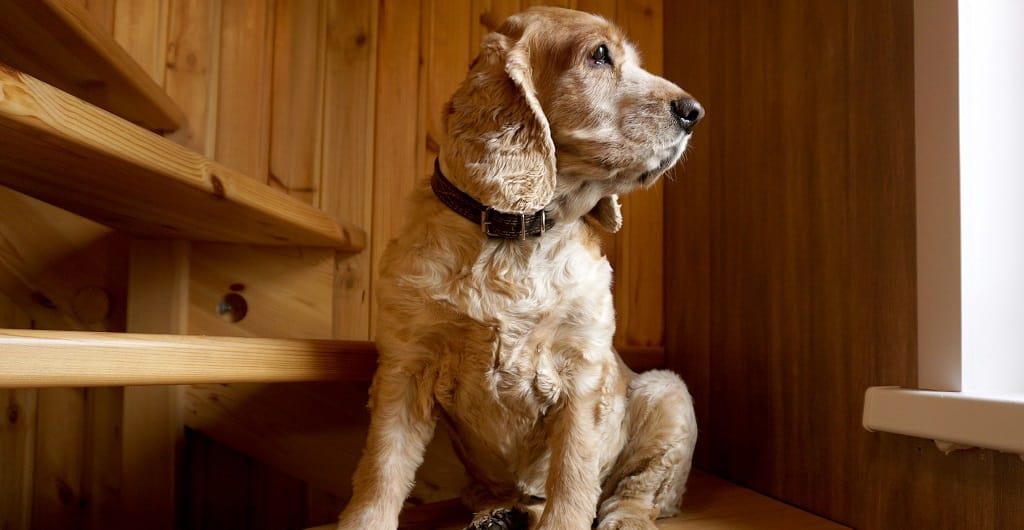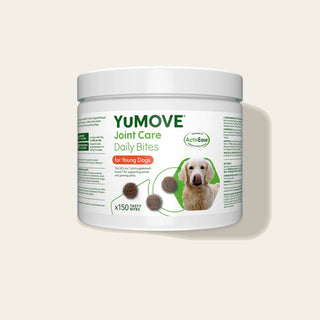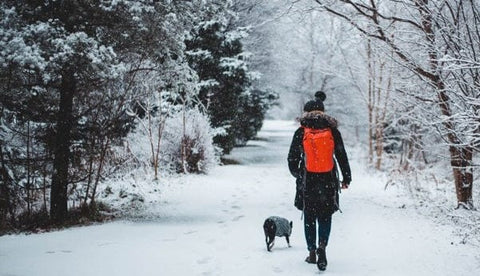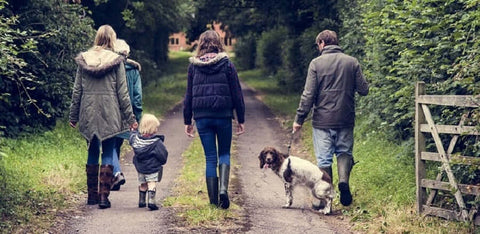

Are stairs bad for dogs and puppies?
If you live in a house with stairs, the chances are the sound of your dog pounding up and down them will be familiar.
But this may bring up a few uneasy questions. Questions like ‘Are stairs bad for dogs?’ Or even, ‘Can puppies climb stairs safely?’
As a general rule, it’s better not to let your canine companion have free reign of the stairs. However, as dog owners ourselves, we know that it’s inevitable that they will sometimes find a reason to climb up and down.
What goes up…
When you go upstairs, your dog may well trail behind you, just to make sure you don’t go out of sight. They might rush upstairs to find their favourite person or retrieve a precious toy. Or they might sneak up the stairs to lay claim to your bed.
… must come down
When your dog rushes down the stairs, half the time it will be a race to the door, triggered by the doorbell. Or perhaps you’ve opened the fridge (a.k.a. the ‘magic cupboard’), raising their hopes that it’s dinner time. Or maybe you’ve done something to suggest that a walk could be imminent – e.g., you’ve picked up your keys, put on your coat, or opened the door.

So, are stairs actually bad for dogs?
While stairs themselves aren’t bad for dogs, there are certain factors that can mean they have more impact on your dog’s joints.
Are stairs bad for puppies?
From your puppy’s point of view, your stairs are a mountain to climb. They can also represent a hazard for a young dog. Are stairs bad for puppies’ hips or joints? Well, they can put excess strain on your puppy’s joints during the most formative phase of their life, in addition to presenting tripping and falling hazards, among other things. It’s recommended puppies should be very closely supervised when they use the stairs.
If in doubt, ask your vet for advice and fit a stair gate at the bottom of the stairs.
If you are able to safely lift your dog, and they can tolerate it, sometimes the best solution is for you to simply carry them up the stairs. See our blog for tips on how to lift your dog safely.
And, for a bit of extra joint and mobility support, why not try giving your puppy YuMOVE Joint Care for Young Dogs?
Are stairs bad for older dogs?
When your dog is going up and down stairs, it does require a greater range of motion in the front and back joints, compared to when they’re strolling along on flat ground. This can be more difficult for older dogs, as their joints don’t always have the level of flexibility needed to go up and down the stairs frequently.
And, if your dog is getting older and showing signs that they may need more joint support, going up and down stairs can put extra pressure on their joints. In this case, a stair gate can be a good idea to stop them from following you up the stairs and you can consider using a dog joint supplement.
You might also consider using a ramp if your dog has difficulty walking up indoor or outdoor steps. You can buy one ready-made or do a quick online search, and you’ll find all kinds of ingenious solutions.
Other factors that contribute to the safety of stairs for dogs
Carpet vs wood flooring for dogs

The first point to think about is what kind of material is under your dog’s paws as they race up and down the stairs. Any kind of carpeted stairs will provide considerably more traction than bare wood stairs. Wood can, in fact, be pretty slippery for a dog, especially if they have long, untrimmed nails.
This applies to wooden floors just as it does to wooden stairs. We discuss this in our blog on how to adapt your home for your senior dog, where we recommend putting down non-slip mats on wooden floors to give your dog a more secure surface to walk across.
If you have bare wooden stairs, you could make life easier for your dog by carpeting them. You can even get pet-friendly non-slip stair treads which stick onto wooden stairs and give your dog extra traction as they go up and down, helping to prevent them from slipping.
Which dog breeds do best on stairs?
Breed can also be a factor when considering how easily your dog will manage the stairs.
It’s obvious that a long-legged Lurcher or a Cocker Spaniel is going to find it simpler to bound up the stairs than a little low-rider like a Chihuahua or a Yorkshire Terrier. Dogs that have extra-long backs, such as Dachshunds, Corgis and Bassett Hounds, should take extra care, or avoid taking the stairs if possible. This can be because the angle and height of the stairs may put more pressure on their smaller legs and joints.
What to do if my dog has difficulty with stairs?
If your dog is having difficulty using the stairs, you can:
- Lay down non-slip mats on any slippery surfaces
- Install a gate to stop them from going upstairs too frequently
- Transition their life downstairs, including their bed and feeding routines
- Install ramps around the home in their favourite elevated resting places
- Train the ‘heel’ command to set the pace and reward them when they use the stairs safely
Dogs that are scared of stairs
Another factor to consider is that some dogs are scared of stairs. Technically, this is called ‘bathmophobia’. It comes from the Greek for step – ‘bathmos’ - and fear – ‘phobia’.
What can make a dog scared of stairs? Unfamiliarity is one factor. If your dog just isn’t used to stairs – such as if they’ve grown up in a bungalow – this could contribute to fear and uncertainty. Alternatively, a dog who’s previously had a bad experience on some stairs might develop bathmophobia.
Either way, you can help your dog overcome this fear by being patient, rewarding them for coming near the stairs, and helping them to see that there’s nothing to be scared of.
If your dog doesn’t do stairs, it’s probably not because they’re being a diva. It’s possible they might benefit from additional joint support, so you should speak to your vet. Along with your vet’s advice, you can use the approaches we suggest and consider giving them a supplement like YuMOVE Joint Care.



